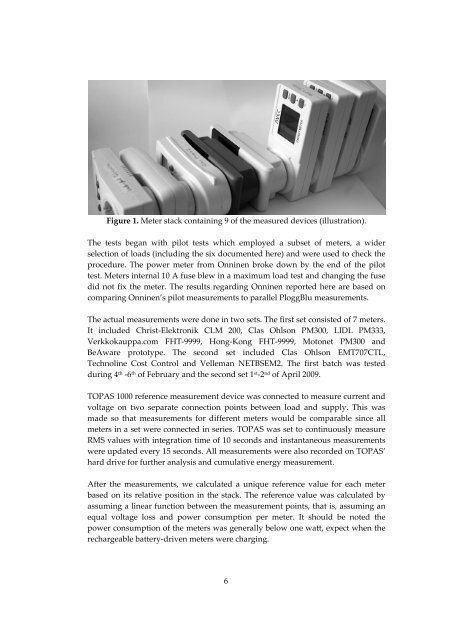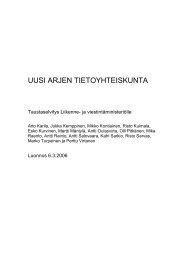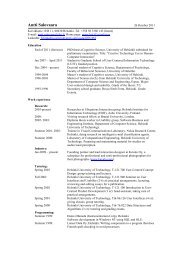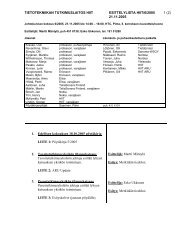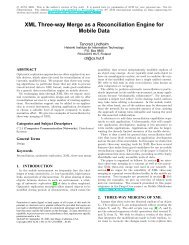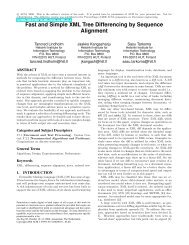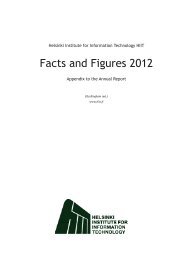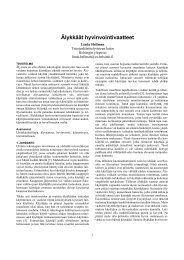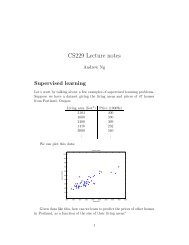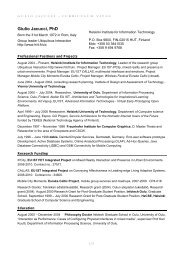Comparison of EndâUser Electric Power Meters for Accuracy
Comparison of EndâUser Electric Power Meters for Accuracy
Comparison of EndâUser Electric Power Meters for Accuracy
Create successful ePaper yourself
Turn your PDF publications into a flip-book with our unique Google optimized e-Paper software.
Figure 1. Meter stack containing 9 <strong>of</strong> the measured devices (illustration).<br />
The tests began with pilot tests which employed a subset <strong>of</strong> meters, a wider<br />
selection <strong>of</strong> loads (including the six documented here) and were used to check the<br />
procedure. The power meter from Onninen broke down by the end <strong>of</strong> the pilot<br />
test. <strong>Meters</strong> internal 10 A fuse blew in a maximum load test and changing the fuse<br />
did not fix the meter. The results regarding Onninen reported here are based on<br />
comparing Onninen’s pilot measurements to parallel PloggBlu measurements.<br />
The actual measurements were done in two sets. The first set consisted <strong>of</strong> 7 meters.<br />
It included Christ‐Elektronik CLM 200, Clas Ohlson PM300, LIDL PM333,<br />
Verkkokauppa.com FHT‐9999, Hong‐Kong FHT‐9999, Motonet PM300 and<br />
BeAware prototype. The second set included Clas Ohlson EMT707CTL,<br />
Technoline Cost Control and Velleman NETBSEM2. The first batch was tested<br />
during 4 th ‐6 th <strong>of</strong> February and the second set 1 st ‐2 nd <strong>of</strong> April 2009.<br />
TOPAS 1000 reference measurement device was connected to measure current and<br />
voltage on two separate connection points between load and supply. This was<br />
made so that measurements <strong>for</strong> different meters would be comparable since all<br />
meters in a set were connected in series. TOPAS was set to continuously measure<br />
RMS values with integration time <strong>of</strong> 10 seconds and instantaneous measurements<br />
were updated every 15 seconds. All measurements were also recorded on TOPAS’<br />
hard drive <strong>for</strong> further analysis and cumulative energy measurement.<br />
After the measurements, we calculated a unique reference value <strong>for</strong> each meter<br />
based on its relative position in the stack. The reference value was calculated by<br />
assuming a linear function between the measurement points, that is, assuming an<br />
equal voltage loss and power consumption per meter. It should be noted the<br />
power consumption <strong>of</strong> the meters was generally below one watt, expect when the<br />
rechargeable battery‐driven meters were charging.<br />
6


